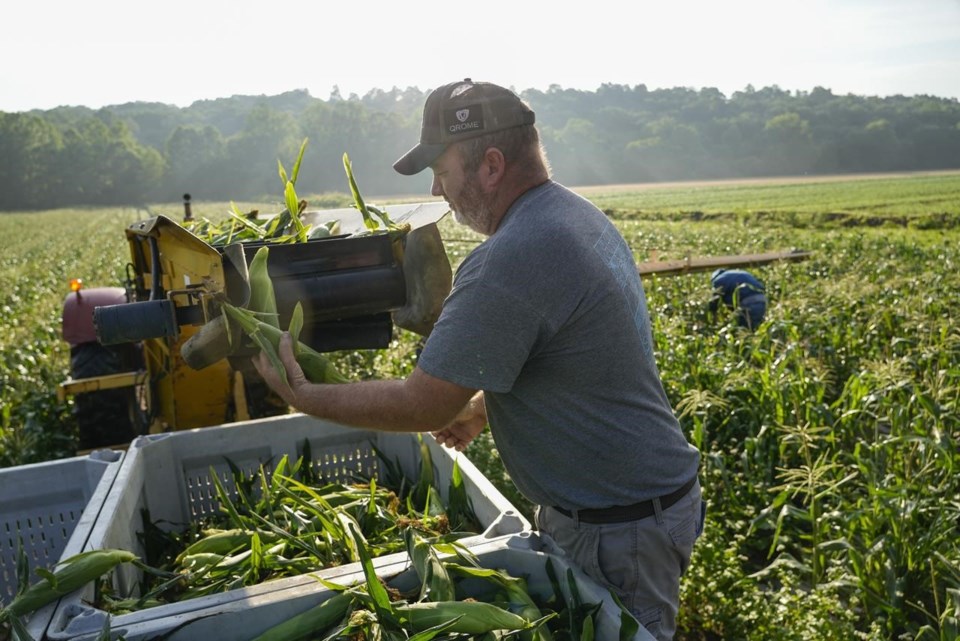Mily Trevino-Sauceda was 9 when her mother fell as she worked to move irrigation pipes along rows of potato and alfalfa on an Idaho farm. Mily's 10-year-old brother splashed water over their mother's face and body while her children looked on, scared and crying. Their mother had fainted from the heat, and could never again work as fast or as long in the sun.
Decades later, the memory remains sharp for Trevino-Sauceda, who says few systemic changes have been made to safeguard farmworkers from extreme heat.
“Knowing all this still happens, it angers,” said Trevino-Sauceda, now the executive director of Alianza de Campesinas, a women farmworkers’ organization based in Oxnard, California. “It angers because we know what it is to do this kind of work. And even though we want to be loyal to doing a good job, we don’t even think at the time that if we’re treated as human beings or not. We just want to survive it.”
As Earth this week set and then repeatedly broke unofficial records for average global heat, it served as a reminder of a danger that climate change is making steadily worse for farmworkers and others who labor outside. Heat advisories and excessive heat warnings rolled out across much of the U.S., and farms in Oregon, Texas and much of the southern and central regions of the country were expected to see highs pushing 100 next week.
Farm workers are 35 times more likely to die of heat exposure than workers in other industries, according to the National Institutes of Health, but there is no federal heat standard that ensures their health and safety.
California is one of the few states that has adopted its own standards. Those include keeping fresh and cool water nearby; providing access to shade; and monitoring workers for health issues when the temperature goes above 95 degrees, according to the United Farm Workers Foundation.
Edgar Franks describes working on farms in the heat as “a matter of life and death." Like Trevino-Sauceda, he has lifelong memories of being hot and uncomfortable in the fields where he and his family worked, first growing up in Texas while working on citrus and watermelon, and later in Washington state in fields of cauliflower, cucumbers, raspberries and blueberries.
“There’s no escaping it,” he said of the exposure to the elements over the 20 years he's been in the industry. “No matter if you’re, you know, covered from head to toe in like the best ventilated clothing or wearing the hats and all that, or in a T-shirt or anything, it’s going to be hot no matter what.”
Franks still works in berry fields in Washington but is also political director for farmworker union Familias Unidas por la Justicia. He's been tracking climate change for a long time, and recalls being summoned to a 2017 strike by dozens of farmworkers in northwest Washington state. They were protesting poor working conditions, including laboring under oppressive heat and smoky conditions from Canadian wildfires.
“It’s not normal to go through these heat waves and, you know, act as if nothing is happening,” he said. “And we just continue to normalize this, then, and nothing is going to be done to protect workers."
Climate change makes extreme heat more likely and more intense. Farm work is particularly dangerous because workers raise their internal body temperature by moving, lifting and walking at the same time they're exposed to high heat and humidity, said Dr. Jonathan Patz, chair of health and the environment at the University of Wisconsin-Madison.
Pedro Murrieta Baltazar, a worker in sweet corn and vegetable fields at Way Farms in Waverly, Ohio, said this week that this year's heat hasn't felt as bad to him as some prior years. But the farm where he works takes precautions nonetheless.
During the summer, they work at one side of the field in the early morning when it's cooler, and then “afterward, they put us on the other side, where there is more shade,” Murrieta Baltazar said, speaking in Spanish.
If workers don't take breaks to get out of the sun, drink water and rest, they can experience nausea, vomiting, dehydration, muscle cramps and more — all the symptoms of a fever without any infection, said Roxana Chicas, an assistant professor in the nursing school at Emory University in Atlanta.
Chicas, who researches the health effects on farmworkers of environmental and occupational exposures, described what it was like to work with fern cutters coming in from the fields to have their blood drawn for samples, even after their bodies had had some time to cool.
“I can feel how hot they are,” Chicas said. “It’s just like dissipating their body and just see how their their face is flushed red, and their clothing is, you know, soaking wet from sweating.”
Even as the heat makes life more challenging for agricultural workers, unsustainable farming practices are also contributing to the emissions that fuel climate extremes. Patz, of the University of Wisconsin, noted the need to reduce the demand for meat in Western diets. He and Franks both called for changes in farming that could use less water and fertilizer and store more of the carbon that contributes to climate change.
“I think looking at ways to do agriculture in more sustainable, regenerative ways that actually are better for the climate and for the workers, I think it’s possible,” Franks said.
___
Follow Melina Walling on Twitter @MelinaWalling.
___
Associated Press climate and environmental coverage receives support from several private foundations. See more about AP’s climate initiative here. The AP is solely responsible for all content.
Melina Walling, The Associated Press


